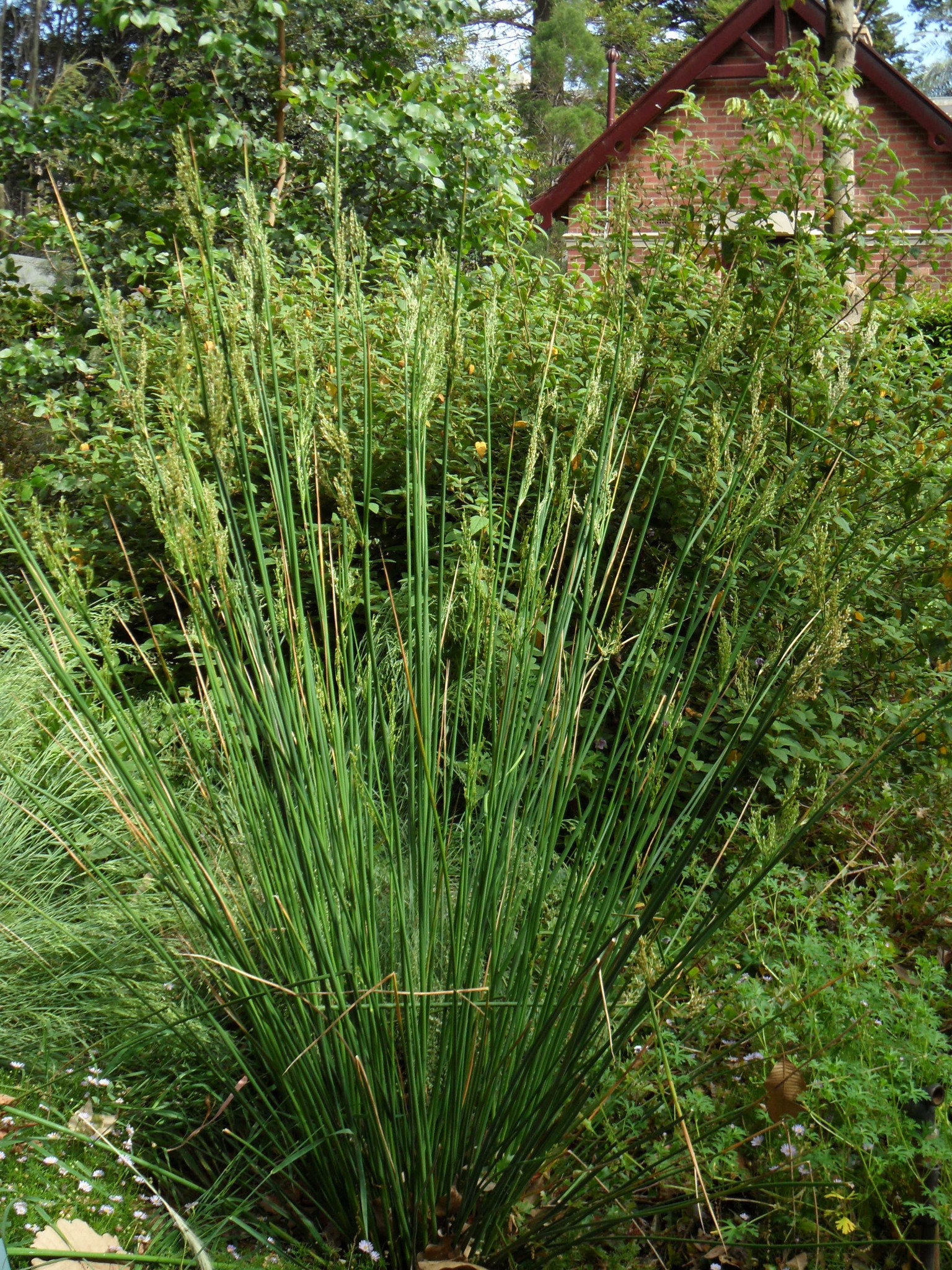
Classical name for the rush.
Tufted or rhizomatous perennial, rarely annual, hairless herbs. Leaves basal with open sheaths, blades flat to channelled or cylindrical, with pith either solid or partitioned, occasionally highly reduced to a point (cataphyll). Bracts sometimes leaf- or stem-like. Flowers clustered or solitary. Ovary 1 or 3 chambered. Fruit capsule smooth or shiny.
Flowering occurs from spring to summer and the capsules generally remain on the plant. The striking spiky upright forms of Juncus make them valuable garden subjects but the number of species used is few.They are used widely in revegetation of wetlands. There are a number of weedy species of pastures and wetlands. J. bufonius L., Toad Rush, is a cosmopolitan weedy annual in damp areas both in crops and gardens.
Those species occasionally offered include: Juncus effusus L. 'Spiralis' which has twisted stems; J. holoschoenus R. Br., Joint-leaf Rush; J. pauciflorus R. Br., Loose-flower Rush, and J. usitatus L.A.S. Johnson. Juncus are difficult to identify and the range of cultivated species varies: a key would be of little value.
Division of rootstock.
Some species have medicinal applications, others are crafted to make matting and such.
Leaf sheaths open; leaves hairless; capsule containing numerous seeds.
About 300 species, 68 in Australia, 31 endemic.
Source: (2005). Juncaceae. In: . Horticultural Flora of South-eastern Australia. Volume 5. Flowering plants. Monocotyledons. The identification of garden and cultivated plants. University of New South Wales Press.
